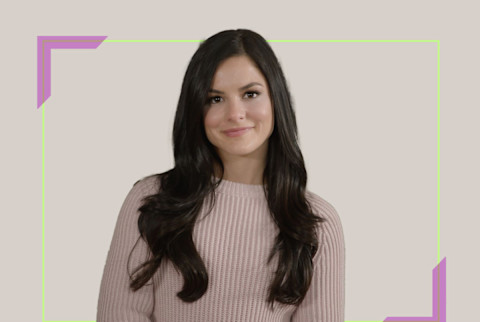I Thought I’d Just Hurt My Back — Then I Was Diagnosed With This Rare Disease

Dance is such a huge part of my life, and always has been. I’ve been dancing since I was three years old, and spent nearly every day since moving my body to music.
So at age 23, while performing onstage during the 7th season of So You Think You Can Dance, I was shocked to experience numbness from the waist down suddenly. I felt shocks down my spine, and I had no idea what was happening.
I assumed I’d probably pinched a nerve in my back — after all, as a dancer, I was constantly throwing my body around. I was also used to pushing past pain and discomfort, so I just kept going. I didn’t want to seem like I was hurt or sit out of the show, so I continued to pummel through it all.
When I later went to see my doctor, they had no idea what had caused it. So I carried on with dancing and performing as usual. But as an athlete very in tune with my body, I knew deep down something wasn’t right.
How I discovered a diagnosis
After nearly a year of symptoms, I started to question whether I’d really hurt my back, or there was something else going on. I began to read up on multiple sclerosis (MS). My maternal grandmother lived with primary progressive MS, and as I began to get more educated on the condition, I realized there was a lot of crossover with what I was experiencing.
When I first mentioned this to my doctor, they were very skeptical, so I went to see a neurologist and they did all of the necessary tests. When I was told I had relapsing remitting MS (RRMS), I was devastated, but I also felt slightly relieved to have clarity about what was going on.
Then, I immediately asked what this would mean for my dance career. To my surprise, the doctor said one of the best things I can do for MS is to keep my body moving—so dancing was actually a great way to stay healthy. That was music to my ears.
After my diagnosis, I sought out ways to support my body and mind
From there, I knew I had to get on the ball, and get my proper care team together. That included a good neurologist, a therapist, and a supportive community.
Truly, I can’t emphasize enough how important it is to surround yourself with a circle of friends and family who can be there through every step. When I met my husband, he told me this isn’t just your disease, it’s our disease. This type of caring and compassion is how I'm able to get through the really tough times.
I also began incorporating more healthy lifestyle practices into my routine, which I’ve kept up to this day. First and foremost, moving my body regularly is key—if I don’t, I feel like I get super stiff and my mental health isn’t where it should be.
As I progressed on this journey, I also discovered music therapy—which has been around for an extremely long time. I began doing this type of work through MS in Harmony. They have different educational modules on their website led by board-certified music therapists. These exercises are designed to help people with MS support brain function, and potentially mitigate physical and mental symptoms. I’ve found this type of therapy to be so powerful.
Another thing I’ve had to learn is how important it is to be realistic about my bandwidth, and preserve my energy accordingly.
What I want people to understand about living with MS
MS rears its ugly head in different ways for each individual person. It’s absolutely unique for everyone. For me, a lot of the symptoms are cognitive, so you can’t really see them. When I’m fatigued, that’s when it shows—like maybe I’ll forget things or my sentences will get jumbled between my brain and mouth.
If you have someone in your life who is newly diagnosed, I recommend asking: I want to be there for you, can you tell me what that looks like right now? That might mean sending dumb memes, checking in on how they’re feeling, or bringing them food—again, everyone is different and has individual needs.
And for anyone who has been diagnosed, I advise practicing patience with yourself. Work on strengthening that mind-body-soul connection, by asking: What do I need right now? One thing that MS has really taught me is to listen to my body. Even though you might want to seem tough and like you have it all together, but you have to take care of your own well-being if you want to show up as the best version of yourself in the world.
I believe in the strength of the mind, so if you are in an awesome mental state of mind, everything else can fall into place.
